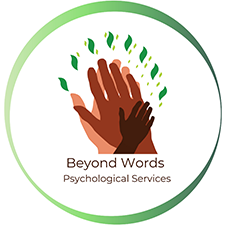THIS IS WHAT IT’S LIKE . . . Part 2
As a child and teen, I intentionally avoided becoming friends with others who had brown skin. I didn’t want to be labeled as “one of them” – a foreigner, someone who speaks with an accent, someone who smells different, someone who wears strange clothing, someone who eats gross food. I just wanted to be White, because almost everyone around me was White. I just wanted to fit in and feel normal.
My senior year of high school, an in AP Biology class, just by chance, I was seated next to two other Asian students – one was Korean, and one was Indian, like me. Both girls were raised within families who shared their ethnicity. I had seen them in the halls, but never spoken with them. I made assumptions about them based upon their skin color, just like everyone else did with me. It wasn’t fair and it didn’t make sense, because I hated when people did that with me, but it was all I knew how to do at the time. I had not been around many people of color, and my family never talked about race or racial stereotypes, so I had no compass the gauge my interactions except that of my White peers.
At first, I was embarrassed to sit near them and interacted as little as possible. I wanted to send a clear message that I was “American” and I fit in in the sea of white faces, despite the obvious fact that I didn’t. But as the semester progressed, a funny thing happened. I became close with these girls. I became connected with them on a deeper level than any of my other friends, because there was a shared and unspoken understanding of what it was like to be the brown person in a sea of white faces. For the first time, I started to actually feel a sense pride in my brown skin. Senior. Year. Of. High. School.
I even became friends with the other Indian girls at school. For Multicultural Day, I joined them in front of the entire school to perform a dance in traditional Indian clothing – borrowed from my new friends, of course. I had so much fun, and felt a sense of belonging I had never experienced before in my entire life. When a moment of self-doubt started to creep in as I performed for the sea of white faces, all I had to do was look into the brown eyes of one of my new Indian friends, and my confidence swelled.
I had never had the experience of looking at someone who resembled me to feel empowered before. When my skin color was put down, or I felt poorly about my appearance, or I wished to be blond-haired-and-blue-eyed, there had been no alternative. I couldn’t go and talk to my Indian mother about my insecurities, because as a transracial adoptee, I didn’t have one. My mother was White, so I didn’t receive the subconscious comfort that comes from looking at someone who resembles you and loving them so much that all you see is beauty, which eventually translates into recognizing and believing your own beauty, even in the darkest moments of self-doubt.
This is what it’s like when you see sheer joy, confidence, and beauty in the faces of those who share your skin color and physical features, and allow that mirror to cast its reflection of joy, confidence, and beauty within you, awakening a sense of racial pride you never knew was possible.
